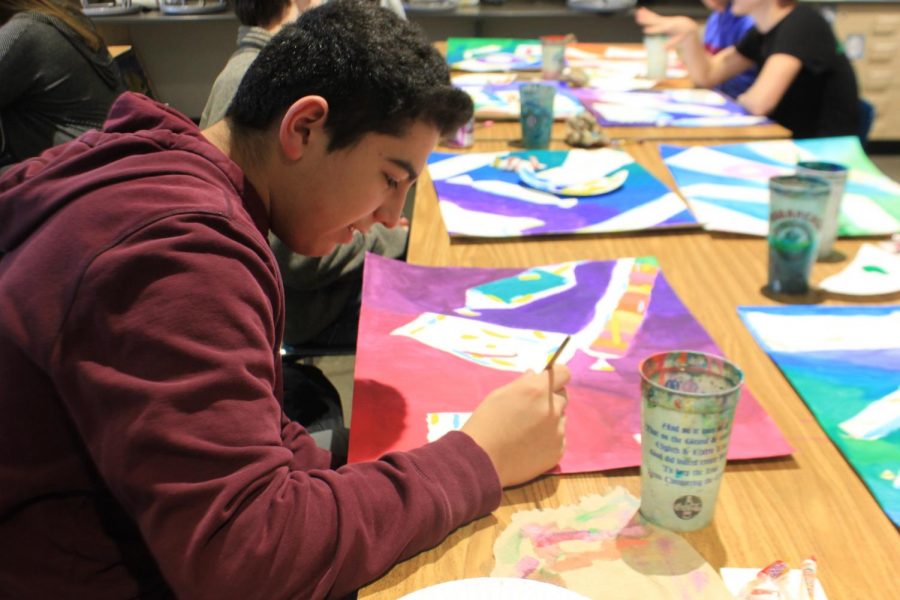Two classes collide
February 11, 2019
Next year, the two base art classes, Elements of Art and Principles of Design, will be combined into one class to help provide a quicker course for eager art students. The event has been long awaited and will finally be put into effect. Principles of Design art teacher, Amy Hellums, was around when the idea was originally brought up years ago, but was not approved due to the process.
“It’s been several years. I know probably four or five years ago, it was brought up, and I remember people saying, ‘Oh they’d never let us do that’ because there were too many reasons why not to do it, but now it just seems more practical,” said Hellums.
Despite the initial resistance, the art teachers and administrators eventually began to brighten up to the idea. Art teacher Ashleigh Easton, who teaches both Elements of Art and Principles of Design, is ready for the new class to be a choice for next year’s students, especially after the idea being presented ever since she started working at the school three years ago.
“I think we are all pretty on board with it, I don’t think there’s been any big opposition this year so far,” said Easton.
One of the reasons for holding off the plan for so long was the potential for unequal opportunity between grades. Now that the idea is taking place, sophomore Chad Gardner can understand the reasoning behind the concern.
“People would be angry that they took two semesters of it when now you can take just one now,” said Gardner
Although the proposal can be seen as unfair for previous art students, it provides an convenient opportunity for incoming ones.
“Some of us had to take two semesters of art and now you can do less projects,” said Gardner.
Both Elements of Art and Principles of design are half credit intro classes. Combining the classes comes with some changes to the set-up of the course.
“The biggest difference is that Elements of Art solely focuses on the elements of art, so we talk about those seven and really dive deep, and then in Principles of Design, we look at how those elements work into the bigger concepts and ideas of Principles, whereas now, we’re going to have projects and then we’re going to talk about what elements and principles make up that project,” said Easton.
Even though combining the classes essentially cuts the time in half, the teachers have worked to ensure that the students are as prepared as previous years with the information that was originally integrated into each class. They plan to eliminate previous long-term projects to help make good use of their time.
“We still hope to hit on most of the same techniques and terminology, it’s just not going to be with projects that go on forever, like some of the projects currently tend to,” said Hellums.
Cutting the required intro classes in half is meant to be time conserving and beneficial for new art students. The main reasoning behind the idea was to make it easier and quicker for the kids to take more upper level art courses.
“With kids wanting to take upper level classes in art or in other areas also, if we do not do something to where they can combine that class, it makes it a lot more difficult for kids to fill all of their requirements, plus get in the upper levels of art, because there are too many steps to take, so this allows them to take other classes quicker,” said Hellums.
Previous freshman, like Gardner, experienced the negative effect that the current art set-up presented.
“I want to take upper level art classes, but I have to wait until I finish the credits,” said Gardner.
The opportunity will help students acquire more basic art knowledge sooner in order to participate in more of a variety of art classes while they have the chance.
“A benefit is that there will be more art options, so you can go take photography right after you take your Fundamentals class instead of having to wait a whole year, so just you have a lot more options to understand different mediums,” said Easton.
Overall, the change to the art layout is hoped to be more beneficial and practical for students looking to expand their art horizons. The combining of the two classes makes time more convenient for future art students.




